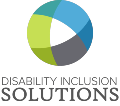In 1990, President George H.W. Bush signed into law the Americans with Disabilities Act (ADA). It was the first comprehensive civil rights law for people with disabilities, making it possible for everyone with a disability to live a life of inclusion and equality. The law was meant to guarantee people with disabilities have the same opportunities in all aspects of life as every other American, including employment, government programs and services, and private establishments.
However, following the enactment of the ADA, controversial Supreme Court rulings[1] caused a limit in the scope of opportunities and protections originally intended by the law. So, on January 1, 2009, the Americans with Disabilities Act Amendments Act (ADAAA) of 2008 went into effect, essentially rectifying the situation.
The definition of disability, as outlined by the ADA, is still a three-part definition:-A physical or mental impairment that substantially limits a major life activity-Having a record of such impairment-Regarded as having an impairment
However, the ADAAA made changes to the way this meaning is applied, purposefully decreasing the heavy focus on the precise definition of disability, and making compliance easier for all. The iDisability™ e-learning module, “Understanding and Applying the ADAAA” was developed to help employers and employees understand who is covered by this act.
Nearly 1 million business users across a variety of industries have already benefited from iDisability™, an e-learning platform specifically designed to educate organizations and ensure employees have the knowledge required to effectively communicate, interview, hire, accommodate and engage every employee within the workforce. To schedule a demonstration, complete the contact form.
Source information:[1]http://www.siop.org/tip/jan09/16gutman.aspx





0 Comments